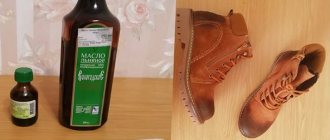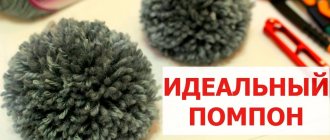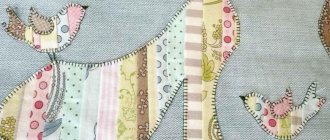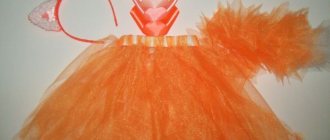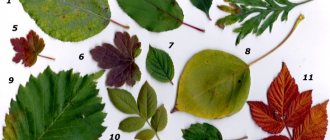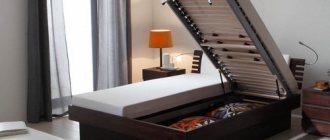Everything you wanted to know about police badges: what they look like, how they are sewn on, what kind of symbols are depicted on them - in our article! We are also happy to embroider them to order; embroidery in Moscow is our specialty!
Article navigation
| Related links
|
Order chevrons
* Fill out the form to calculate the cost of your order
Sleeve insignia of the Ministry of Internal Affairs
All sleeve insignia are sewn at a distance of 80 mm from the shoulder seam.
- On the left sleeve there is a general badge indicating membership in the Ministry of Internal Affairs of Russia.
- On the right sleeve there are stripes indicating affiliation with a specific unit.
Steel-colored police chevrons are worn on a steel-colored woolen tunic or jacket. Gray-blue - on a shirt or blouse of gray-blue color. White - on a white shirt or blouse. Dark blue – on other uniform items, for example, chevrons on an overcoat. The cadets have dark blue stripes.
On special clothing of camouflage colors, the background of the chevron will also be of camouflage color, and the image on it will be one-color and contrasting.
Cadets wear charcoal course marks on the outside of the left sleeve, at a distance of 10 mm below the stripe indicating membership in the Ministry of Internal Affairs of Russia. The sleeve chevron of cadets of the Ministry of Internal Affairs is a red rectangle with golden stripes. How many years of study - so many stripes. Patch sizes: with one stripe - 70x20 mm, with two - 70x33 mm, with three - 70x46 mm, with four - 70x59 mm, with five - 70x72 mm.
Size of police sleeve chevrons: 120x75 mm. Size of sleeve chevrons of justice: 100x75 mm.
Badges
Breastplates are located on the left side of the chest.
On the left breast pocket of a shirt, blouse, jumper, sweater - on the flap, secured with a pin. On the left breast pocket of a jacket, raincoat, vest - on the pocket itself, fastened with a pin. On the tunic on the left side of the chest - 1 cm below the order ribbons or in their place. On weekend wear it is 70 mm below the level of the lapel ledge, on casual wear it is 90 mm. On a woolen coat, woolen jacket and demi-season raincoat - on the left side of the chest, 8 cm below the lapel ledge, fastened with a pin. On a sheepskin coat, a sheepskin jacket - on the left side of the chest 4 cm below the “Police” stripe.
Stripes on the left shelf
"Police" patch . Its size is 110x30 mm. The “Police” patch on the chest is made in the shape of a rectangle with a red edging, the inscription is made in white or silver. On camouflage clothing it has a camouflage background, and the inscription and piping are made in a contrasting color. The traffic police traffic police patch has a size of 118x34 mm, is made in the shape of a rectangle with a red edging and a white or silver inscription. The OMON and SOBR chest patches measure 118x34 mm, are made in the shape of a rectangle in camouflage color with edging and an inscription in a contrasting color. The Aviation patch has a size of 105x70 mm.
Chevrons on a police uniform
New stripes . The most important of them is the badge , made of aluminum. This sign indicates the number under which a specific employee is recorded in the database. traffic police officers this sign is round, for others it is oval. Chevrons are still worn on the shoulders and chest.
There is also a new element of the form - a badge , where you can read the employee’s first and last name.
Back patches
Back patches are attached 10mm above the red line on the back.
The “Police” patch on the back has a size of 275x85 mm, is made in the shape of a rectangle with a red edging and a white or silver inscription. On camouflage clothing it has a camouflage background, and the inscription and piping are made in a contrasting color.
DPS police - made of reflective materials. On the vest there are only the letters DPS.
Special forces units wear OMON and SOBR on their backs, measuring 220x70 mm, in the shape of a camouflage-colored rectangle with edging and an inscription in a contrasting color.
specialized workwear store
How to sew on police chevrons?
Rules for sewing on Ministry of Internal Affairs patches
The sleeve insignia of the Ministry of Internal Affairs is sewn on the outside of the left sleeve, at a distance of 80 mm from its top (shoulder fold or seam, to the top point of the patch. Those chevrons that indicate belonging to a specific unit are located on the right sleeve. On the field uniform - in the center sleeve pocket, on other types of uniforms - symmetrically to the Ministry of Internal Affairs chevron (80 mm to the top.
The sleeve insignia for special rapid response units is sewn onto the left sleeve above the main patch, at a distance of 20 mm from the top.
The chest patch is placed on the right side of the chest above the pocket.
The “Police” patch on the back is placed 1 cm below the reflective line or in the center of the back.
Rules for sewing on patches for cadets: on the left sleeve, at a distance of 10 mm below the sleeve insignia of the Ministry of Internal Affairs. The chevron consists of rectangular “course course” stripes, in an amount corresponding to the course of study.
Location of police chevrons
Police sleeve insignia are sewn at a distance of 80 mm from the shoulder seam or fold. If there is a pocket on the sleeve, then the patch is sewn in the center of the pocket.
- On the left sleeve there is a common sleeve chevron of the Ministry of Internal Affairs of Russia
- On the right sleeve there are chevrons of the Ministry of Internal Affairs indicating that the employee belongs to a specific unit.
- The “Police” patch on the back is 1 cm below the red stripe.
- The “Police” patch on the chest is 1 cm above the left pocket.
Cadets wear rectangular “course” stripes, in the number corresponding to the course of study (one in the first year, two in the second year, etc.) They are located on the left sleeve, at a distance of 20 cm from the top of the sleeve, to the top point of the stripe.
Steel-colored police chevrons are worn on a steel-colored woolen tunic or jacket. Gray-blue - on a shirt or blouse of gray-blue color. White - on a white shirt or blouse. Dark blue – on other uniform items, for example, chevrons on an overcoat. The cadets have dark blue stripes.
Stripes on the left shelf
"Police" patch . Its size is 110x30 mm. The “Police” patch on the chest is made in the shape of a rectangle with a red edging, the inscription is made in white or silver. On camouflage clothing it has a camouflage background, and the inscription and piping are made in a contrasting color. The traffic police traffic police patch has a size of 118x34 mm, is made in the shape of a rectangle with a red edging and a white or silver inscription.
The easiest ways to attach patches to clothes
There are many ways to attach a stripe (patch) to clothing.
I will share 2 of them, the most accessible and the simplest.
Method No. 1 (for handy people)
We take patches (stripes) and place them in the places we like, particularly on the jacket. We lay it out wisely, with feeling, and in arrangement. Very often the process of laying out a composition personally reminds me of how Kai laid out the word ETERNITY!
)
When we have finally decided on the composition of our design, we carefully attach all the patches with pins and sew them on with a regular needle.
This method will 100% reliably attach your patches to your clothes and they definitely won’t go anywhere!
Method number 2 for ordinary people (like me)
We immediately take hot-melt adhesive stripes (patches), then we do the same work of collecting the word ETERNITY!
After this, take a hot iron, and preferably press the patches through gauze for 30-50 seconds.
To be safe, turn the product inside out and iron it again.
The patches will last forever; I personally tried to withstand about 60 washes in the rather harsh conditions of the washing machine.
So it’s up to you to decide which mounting method to choose, and I, in turn, will help you choose the best option using patches!
Back patches are attached 10mm above the red line on the back.
The “Police” patch on the back has a size of 275x85 mm, is made in the shape of a rectangle with a red edging and a white or silver inscription. On camouflage clothing it has a camouflage background, and the inscription and piping are made in a contrasting color.
DPS police - made of reflective materials. On the vest there are only the letters DPS.
DELIVERY within MOSCOW - from 250 rubles.
We also have a master class on how to glue a patch on thermal film.
Various stripes are a popular decoration for clothing, accessories and even shoes. It is not difficult to purchase them, but it is much more difficult to sew them correctly, especially for those who do not have much experience in using a needle. If you need to sew a chevron onto a uniform, the difficulties become greater - in addition to the quality of the stitches, the location of the element is important, everything is very strict here.
You can do the work yourself; our masters have shared their secrets. We offer a manual option, since not everyone has a sewing machine, and working with it requires certain skills. The manual method is accessible to everyone, and even if you have never held a needle in your hands, you will succeed.
How to glue a patch to a jacket with an iron?
The sticker is placed face up and covered with a sheet of paper or tracing paper. Place a hot iron on the paper and press it hard, then hold it for 10-15 seconds to melt the adhesive surface on the patch. If the sticker is large, then it is heated in parts. Small parts are pressed down with the tip of the iron.
Interesting materials:
How much can you make relevant on Instagram? How many cold calls can you make per day? How many mistakes can you make when passing the traffic rules 2022? How many push-ups can you do in 1 minute? How much soap can be made from 1 kg of soap base? How much money does it take to make a patent? How much do you need to step back from the ceiling to make a suspended ceiling? How many revolutions did the Sun make around the galaxy? How many plastic surgeries has Kylie Jenner had? How long does an administrative fine last?
How to sew on a patch correctly
So, we figured out the process itself - in fact, there is nothing complicated in such sewing. But you need to correctly determine the place of the chevron - if you can sew on anything and any way you like on everyday clothes, then sewing patches on the uniform of a security guard, an employee of the Ministry of Emergency Situations or the Ministry of Internal Affairs is strictly regulated. However, as well as for kimonos or other types of sportswear, workwear, and so on.
Regulations for signs of the Ministry of Internal Affairs
This uniform uses a patch on the back, chest and sleeves. The badge is sewn above the shirt or jacket pocket, on the right side. The inscription on the back is placed in the center, but if there is a reflective strip, then 10 mm below it.
The Ministry of Internal Affairs badge is attached to the left sleeve, at a distance of 80 mm from the shoulder seam. The sleeve chevron indicating the name of the unit is located on the right sleeve, at the same distance from the shoulder seam as the sign of the Ministry of Internal Affairs. But in the field uniform, such a patch is located in the central part of the pocket on the sleeve.
The badge of special rapid response departments is sewn onto the left sleeve, placing it above the badge of the Ministry of Internal Affairs - the distance to the top of the sleeve is 20 mm. There are also requirements for cadet badges. Special stripes are attached to the left sleeve, positioned 10 mm lower than the Ministry of Internal Affairs sign.
Regulations for EMERCOM chevrons
Sleeve patches are used on the uniforms of the Ministry of Emergency Situations units. The Ministry of Emergency Situations chevron is placed according to the same regulations as the Ministry of Internal Affairs sign - in the center of the left sleeve, at a distance of 80 mm from the shoulder seam.
Sleeve insignia indicating membership in one of the units are sewn on the right sleeve, in the same way as the Ministry of Emergency Situations insignia (in the center, at a distance of 80 mm).
Badges for cadets are placed on the left sleeve, 10 mm below the sign of the Ministry of Emergency Situations. Be sure to place them at an angle down. Those signs that are golden squares with a gray-blue base must be sewn with an upward angle.
Other rules for sewing on patches. There are many such rules, for each type of uniform or uniform, they are established either by state standards or by certain organizations. Therefore, in each specific case, you need to figure out how to sew a chevron, for example, on a security guard’s jacket or sports equipment, branded clothing, and so on.
But there are general rules for all types of patches:
- 1. If the element is sleeveless and there is a pocket on the sleeve, the patch is sewn in the center of the pocket. Naturally, so that the pocket itself is not sewn up.
- 2. It is necessary to accurately determine the location of the chevron - strictly in the middle.
- 3. Side chevrons of rectangular or square shape must be positioned strictly vertically. Polygonal products are placed in accordance with the regulations.
How to order or find out the cost?
It's easy to do, send us a request by email [email protected] , call or fill out the order form.
Contacts
Embroidered patches and chevrons. Difference, materials and manufacturing methods
If you want to make an embroidered patch, and not apply embroidery directly to clothing, a bag or some other product, then let’s clarify what kind of patches there are, how they differ from chevrons, what they are made of and how they are attached.
An embroidered patch (chevron, patch) is a piece of fabric with an embroidered image or text, edged around the perimeter with a border. If you translate the word patch from English, you get an apt definition of the essence of a patch - a patch that is sewn somewhere.
An embroidered chevron is a military insignia. The appearance of the chevron, its size, shape and even location on clothing is strictly regulated by the authorities. Stripes = patches are the name given to other images embroidered using the same principle in all civil areas of life. The appearance of such stripes is varied. Thus, a stripe, chevron or patch is the same thing technologically. The difference between them is only in the purpose, the picture depicted on them and the degree of freedom in execution.
The base material of the patch is varied. Patches are made as follows: 1. Fully embroidered patch - the background is not made of fabric, but consists entirely of stitches. In terms of cost, this is the most expensive embroidery option. 2. Embroidered patch on a woven base. This is a cheaper option, since large areas are not covered with stitches, but only images and texts are applied. All kinds of fabrics are used as the basis: gabardine, raincoat fabric, twill, broadcloth, oxford, diagonal, jeans, artificial suede and leatherette on a fabric basis and any others. The choice depends on the customer's preferences. 3. The patch is embroidered on a non-woven base. The most common version of such a base is felt (felt). This is an inexpensive option. A more expensive option is genuine leather, on which stripes are also made. 4. Specialized base for embroidery - twilly, canvay and step. Twilly and canvay resemble regular twill and oxford fabric, but are denser. On the reverse side they have a special coating that protects the cut from falling out. Step with its texture resembles embroidery. Designed to simulate an embroidered background against a patch background. Using these backings gives a striking appearance, but the patch is more expensive than using regular fabric.
Most often, patches are made on a textile basis. This base is hooped together with embroidery stabilizers into a hoop or frame and the desired image, previously prepared in the editor, is embroidered on it. In addition to this common method, patches are embroidered in a slightly different way. In this case, the workpiece of the desired shape is pre-cut on a laser, only the stabilizer is hooped into the frame or hoop, the workpiece is fixed on the stabilizer, edged around the perimeter with a border, and then the desired image is embroidered. This technology is similar to traditional appliqué on fabric. A slightly different appliqué technique for embroidering patches is used when equipping an embroidery machine with additional equipment. If the machine has a cutting laser or a hot knife, then the embroidery machine itself cuts out the shape of the patch from the base fabric along a given path before edging the border, then immediately embroiders the rest.
The perimeter border, required for all patches, comes in two types: embroidered or processed on a special overlocker (merrow machine). We make patches with an embroidered border.
Patches can be simply embroidered, 3D volumetric embroidery can be used for the entire image or individual elements, or decorated with sequins. Do the embroidery with simple colored threads, use metallized (gold, silver, bronze) and specialized threads.
After finishing embroidering the patch, it is cut out. There are many cutting methods. 1. cutting by hand using scissors. 2. manual cutting around the perimeter with a soldering iron. This option is not possible for all fabrics; it is used for synthetics. 3. Laser cutting on an embroidery machine immediately after embroidery is suitable for any fabric. 4. cutting out a stripe around the perimeter using a laser engraver according to a template. If the embroidery was done using the appliqué method, then the finished patch should be removed from the stabilizer and the remains of the stabilizer should be scorched along the perimeter of the border. In this case, no threads stick out from under the border of the patch, the cut of the fabric is cleanly closed, which is difficult to achieve when manually cutting the patch with scissors. In our workshop we use 3 cutting methods - scissors, a hot knife on an embroidery machine and a laser engraver using a template.
After embroidery and cutting, cleaning protruding threads, the patches are straightened using a heat press.
Patches can be attached to products in the following ways: 1. sewn on 2. glued 3. attached with Velcro. 4. fasten with buttons - we will make special loops for them (chevrons in the first photo). 5. fasten with special pins - you get easily removable embroidered brooches-badges. 6. The patches can be attached to a carabiner. They are made in the form of rectangular key chains with inscriptions and small logos. Keychains are also made in any shape with any image or text. These keychain badges are attached to a ring.
We embroider patches from 1 piece. The minimum circulation for keychains is 10 pcs. Approximate prices for embroidery of 1000 stitches are given in the table below.
| Product type | from 1 to 10 pcs | from 11 to 50 pcs | from 50 to 100 pcs | >101 pcs |
| Patch – chevron | 15 rubles | 12 | 10 | 9 |
To calculate the full cost of ordering embroidery and creating a design, send us a picture and description of what you want:
- by mail
- on WhatsApp +7-966-110-88-71
- Viber +7-926-246-94-53
- or fill out the order form on the website and attach the necessary files to it
We will promptly make calculations and answer all questions.

